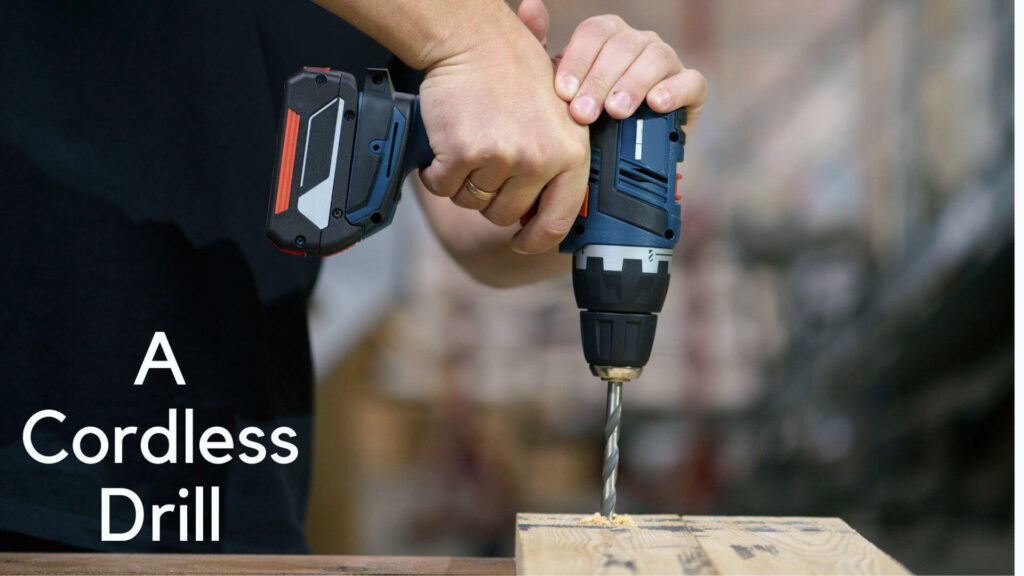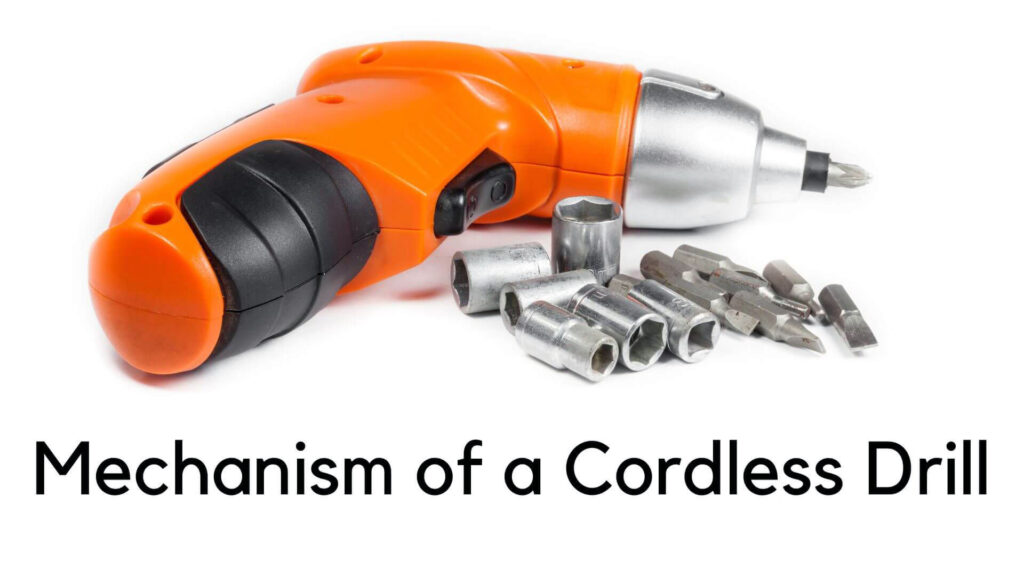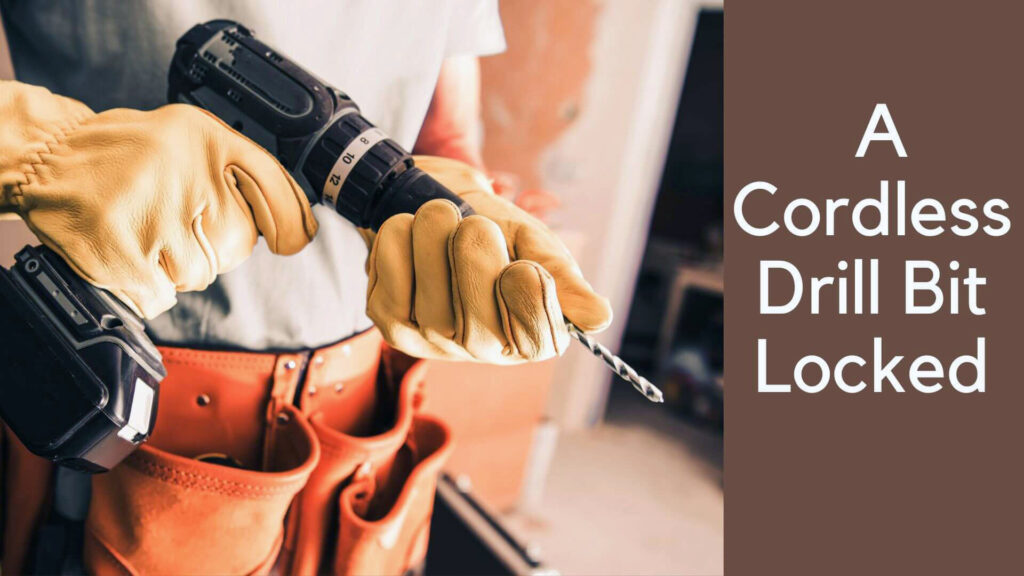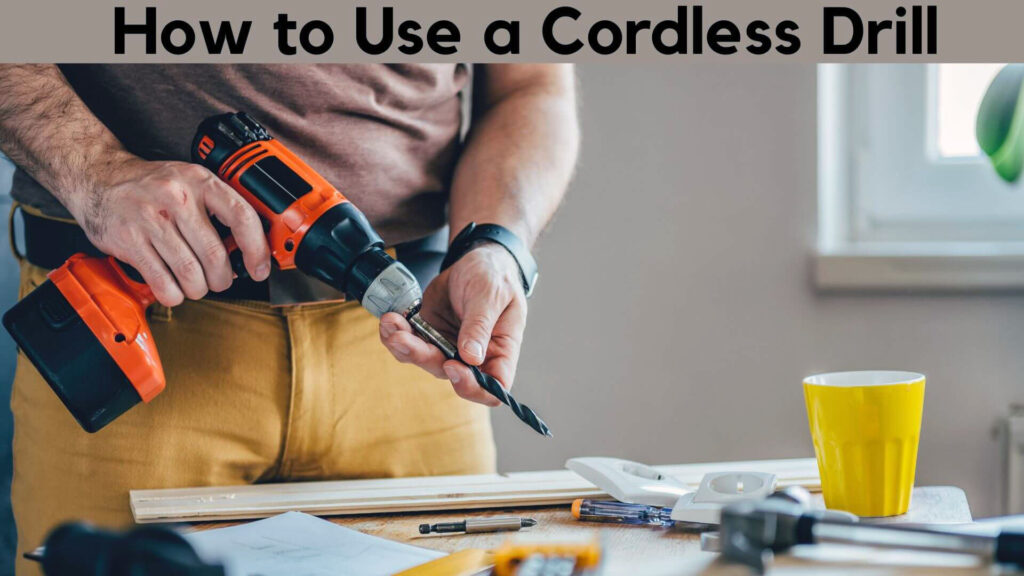Using a cordless drill can significantly simplify your DIY tasks, from hanging shelves to assembling furniture or working on home improvement projects. Mastering the use of a cordless drill is essential to achieving a professional finish, whether you’re an experienced tradesperson or a DIY enthusiast. In this blog post, we will cover easy tips to help you use a cordless drill like a pro.
Table of Contents
What is a Cordless Drill?

A cordless drill is a versatile power tool that runs on rechargeable batteries, making it portable and convenient for various tasks. Unlike traditional drills that rely on a constant power source, a cordless drill allows you to work without being tethered to a wall outlet. It can drill holes, drive screws, and handle different types of materials, such as wood, plastic, and metal.
Cordless drills typically come with adjustable speed settings and torque control, giving you more flexibility in how you use the tool. These features make cordless drills suitable for light tasks like assembling furniture or more demanding jobs such as drilling through tough materials.
The Mechanism of a Cordless Drill

A cordless drill operates using a simple yet effective mechanism. When you press the trigger, it activates the battery, which sends power to a motor. The motor drives a rotating chuck that holds the drill bit. You can adjust the speed and torque using the drill’s control settings to fit the requirements of your task.
The clutch, which is part of the torque control system, helps prevent overdriving screws or damaging materials. If the drill detects too much resistance, the clutch disengages the motor to avoid excessive force. This feature is particularly useful when driving screws into delicate or softer materials.
Read More: How to Revive Cordless Drill Batteries?
How to Use a Cordless Drill Step-by-Step Process
Step 1: Choose the Right Drill Bit
The first and most crucial step is selecting the correct drill bit for the material you’re working on. Using the wrong drill bit can lead to inefficiency, damage to the material, or dulling of the bit. Here’s a quick guide:
Hole saw bits: Perfect for cutting large, circular holes in materials like wood and drywall.
Twist bits: Ideal for wood, plastic, and soft metals.
Masonry bits: Best for drilling through brick, stone, or concrete.
Spade bits: Used for making larger holes in wood.
Step 2: Insert the Drill Bit
After selecting the right bit, insert it into the drill’s chuck. Here’s how:
For added security, many cordless drills come with a keyless chuck, which allows you to tighten the bit by hand.
Open the chuck by turning it counterclockwise.
Insert the drill bit as deep as possible while ensuring it’s straight.
Tighten the chuck by turning it clockwise until the bit is securely in place.
Step 3: Be Prepared to Go Hands-on
Before starting your project, ensure that the material you’re drilling into is securely held in place. You can use clamps to stabilize the material to avoid movement, ensuring accurate drilling and reducing the risk of accidents. Also, double-check the drill settings for speed and torque based on the material you are working with.
Step 4: Start Drilling
Once everything is set up, hold the drill firmly and position the drill bit on the surface where you want to start drilling. Here are some tips for effective drilling:
Apply consistent, gentle pressure to avoid overheating or breaking the bit.
Start with a slow speed to establish the hole and gain control.
Increase the speed as the drill bit sinks deeper into the material.
Step 5: Store Your Tools Properly
After finishing your task, remove the drill bit and store the cordless drill in a safe place. Be sure to charge the battery, so it’s ready for your next project.
Check Also: 8 Best Cordless Drills Under 100 Dollars That You Can Buy
How to Care for Your Cordless Drill.
Proper care and maintenance of your cordless drill can extend its lifespan and ensure it performs at its best. Follow these steps to keep your tool in excellent condition:
Step 1: Clean the Drill After Each Use
Wipe down the drill and its components using a dry cloth after each use. Remove any dust, debris, or material residue that could clog the drill’s vents or cause wear on the motor and moving parts.
Step 2: Store the Drill in a Safe Place
Store your drill in a dry, secure location away from moisture or extreme temperatures, which can damage the internal components or affect battery life. Keeping your drill in its case or a toolbox is ideal.
Step 3: Regular Schedule Maintenance
Periodically inspect your drill for wear and tear, such as worn-out drill bits, loose screws, or battery issues. Lubricate the moving parts and check that the battery is holding a charge properly.
Video Instruction–>
The Benefits of Using a Cordless Drill.
Using a cordless drill offers several benefits:
- Portability: You can take a cordless drill anywhere without being restricted by cords or power outlets.
- Ease of use: Cordless drills are typically lightweight, making them easier to handle for extended periods.
- Versatility: With adjustable torque and speed settings, cordless drills are suited for various materials and tasks.
- Convenience: Rechargeable batteries mean you can work continuously without needing to swap between cords.
Read More: How to Use Clutch on Cordless Drill For Better Finish
Keeping a Cordless Drill Bit Locked

Ensuring the drill bit is securely locked in place before starting work is critical for achieving a clean, professional finish. A loosely fitted drill bit can wobble, which leads to inaccuracies, damage to materials, or breakage of the bit. Always double-check the chuck for tightness.
Read More: The Complete Guide to Using a Ryobi Drill: Beginner’s Guide
Things to Consider
When using a cordless drill, consider these important factors:
- Battery life: Keep spare batteries on hand or recharge after each use.
- Torque settings: Always adjust based on the material’s resistance.
- Speed settings: Higher speeds are better for drilling holes, while lower speeds are ideal for driving screws.
Read More: Can I Drill Concrete with a Cordless Drill?
How Can I Maintain a Cordless Drill Battery Longer?
Maximizing your cordless drill battery’s life is essential to keeping your tool ready for action. Here are some tips:
- Avoid overcharging: Disconnect the battery once it’s fully charged to prevent overcharging, which can degrade battery life.
- Use the right charger: Only use the charger designed for your specific battery model.
- Store batteries correctly: Keep the batteries in a cool, dry place when not in use to prevent overheating.
Read More: How To Charge A Cordless Drill Without The Charger
FAQS About How to Use a Cordless Drill
What are the parts of a cordless drill?
A typical cordless drill consists of the following parts:
Battery: Powers the drill.
Chuck: Holds the drill bit in place.
Trigger: Controls the drill’s power and speed.
Clutch: Allows for torque control.
Motor: Powers the rotation of the chuck.
What are the safety precautions that need to be taken while using a cordless drill?
Some essential safety tips include:
Keep the drill bit sharp and replace it if it becomes dull.
Always wear safety goggles and gloves.
Use clamps to secure the material.
Start drilling at a low speed to maintain control.
How do you maintain a cordless drill?
Maintenance involves cleaning the tool after each use, storing it properly, and performing regular inspections for wear and tear. Always ensure the battery is charged and that all parts are functioning correctly.
What are the different types of drills available in the market?
Besides cordless drills, other types include:
- Corded drills: Provide continuous power but limit mobility.
- Hammer drills: Ideal for drilling into hard materials like concrete or masonry.
- Impact drivers: Designed for driving screws with high torque.
Last Thought
Using a cordless drill like a pro is not just about knowing how to pull the trigger. It involves understanding the tool’s features, selecting the right bits, and following proper safety and maintenance practices. With the tips provided in this guide, you’ll be equipped to handle any task efficiently, delivering high-quality results every time. Whether you’re a beginner or a seasoned DIYer, mastering the cordless drill will elevate your projects to a professional level.

Hey, I am MD Hrithik Hossain, I’m a huge fan of DIY crafts. My workshop is where I spend most of my spare time, and I’m always working on some project. To that end, I’d like to share some of my knowledge and experience with you in power tools, woodworking, and other specialized materials fabrication.
I will guide you with genuine knowledge that can assist you with deciding whether a drill is appropriate according to your requirements or not. If you want to find the best drill and know which type of drill is most suited for your needs, then I can guide you with my expertise. My passion lies in helping others find the correct products they need at an affordable price.


